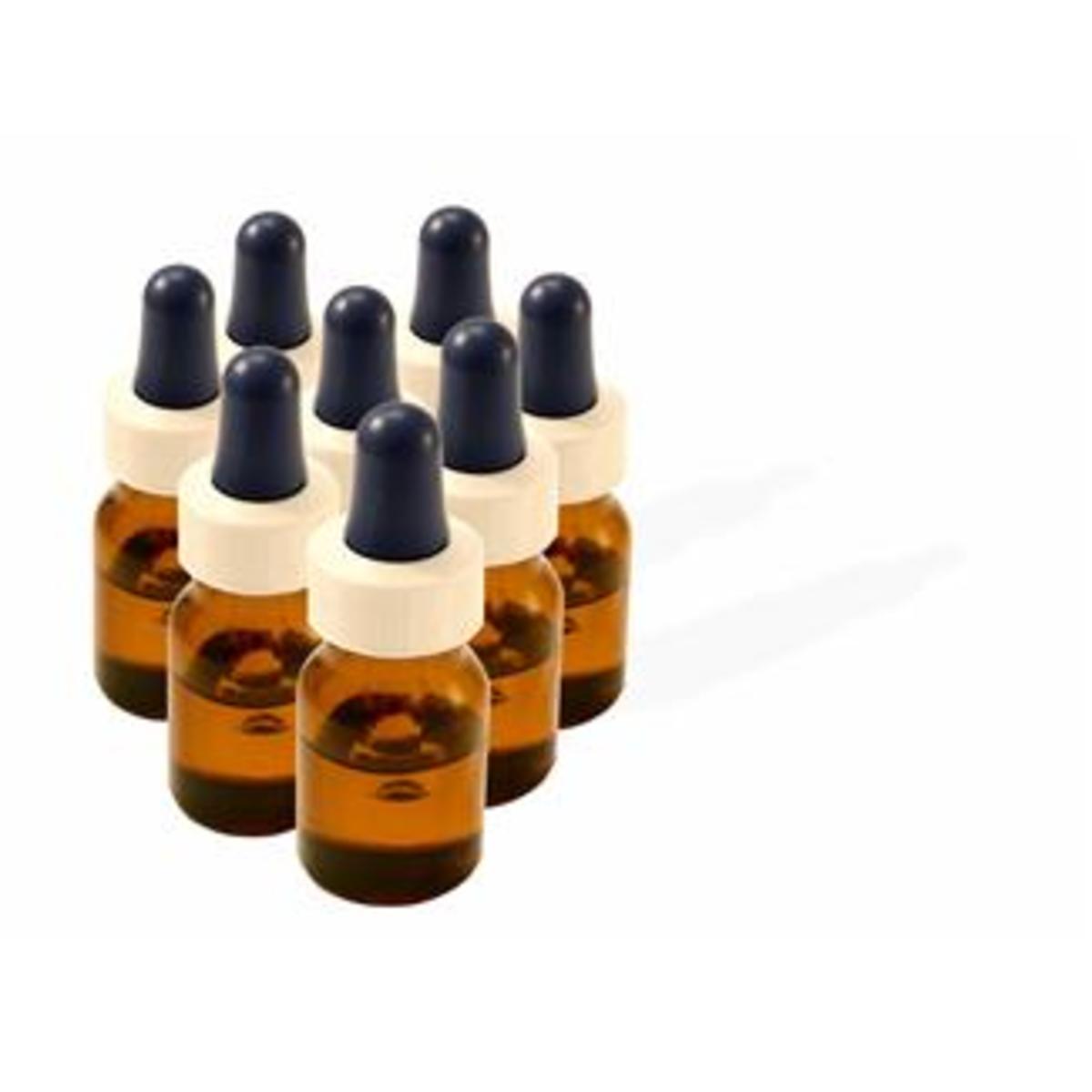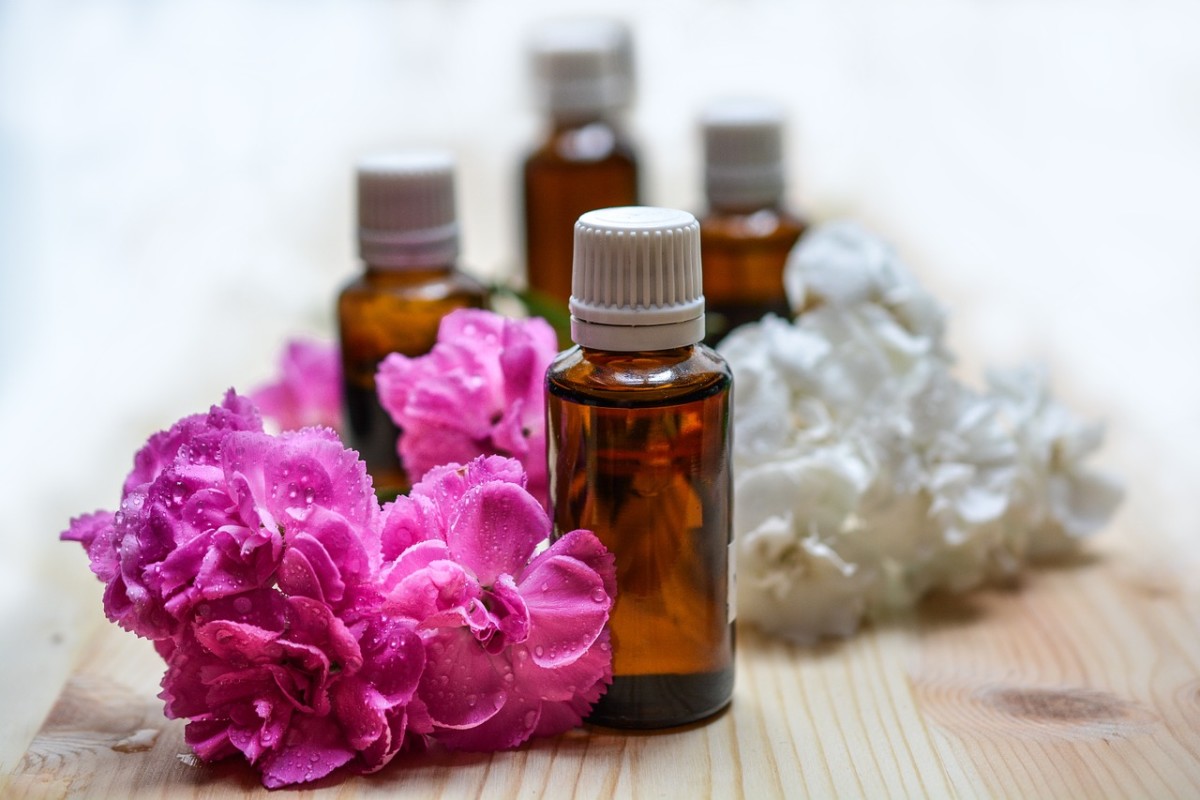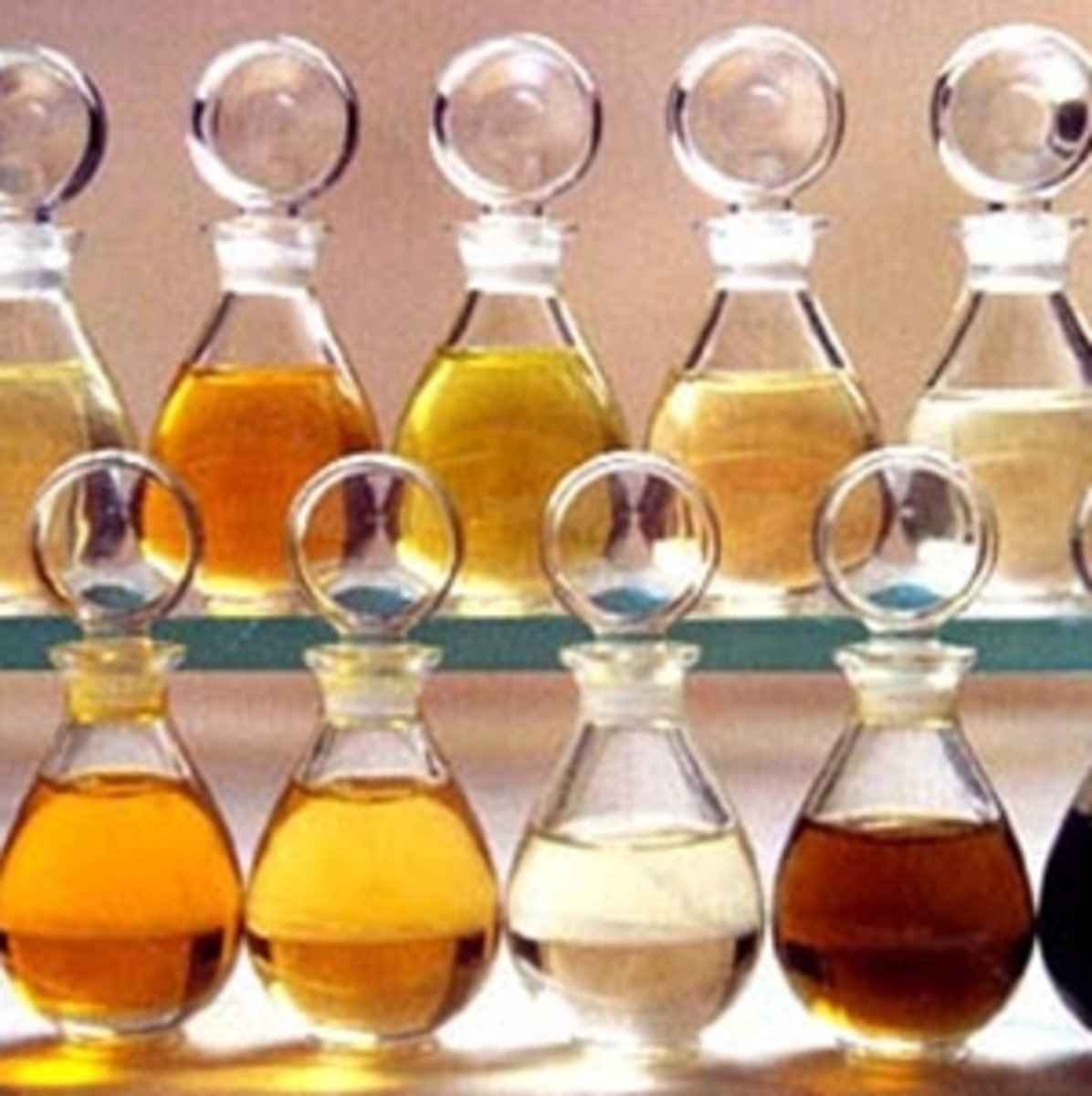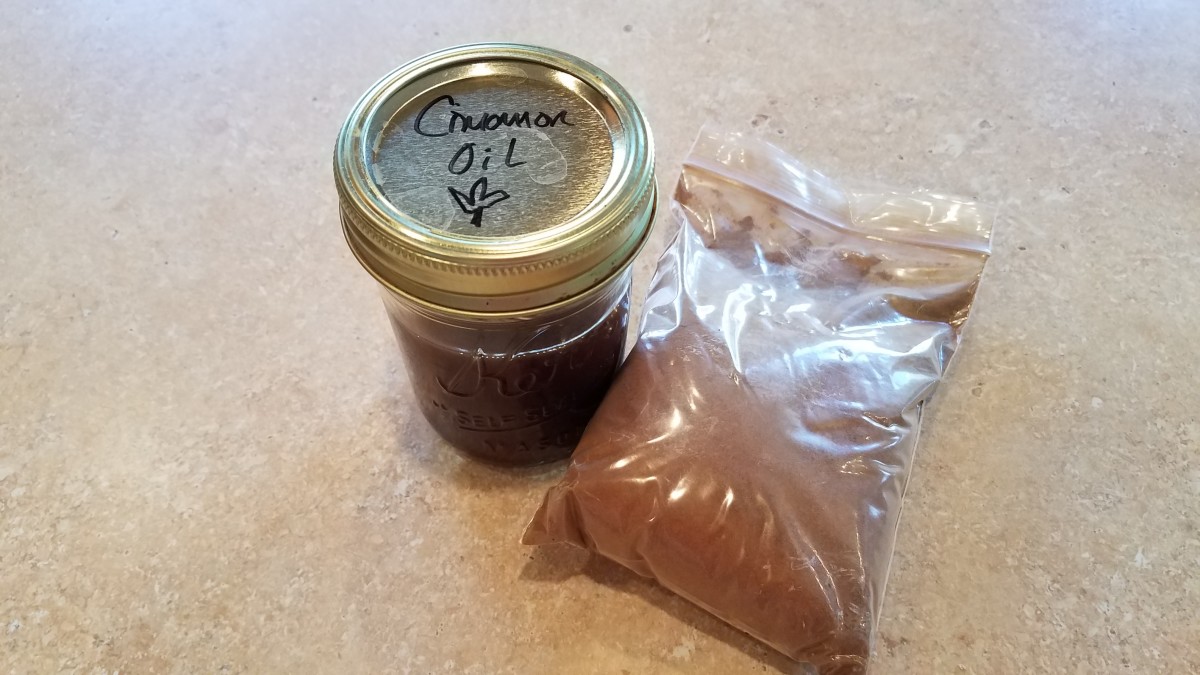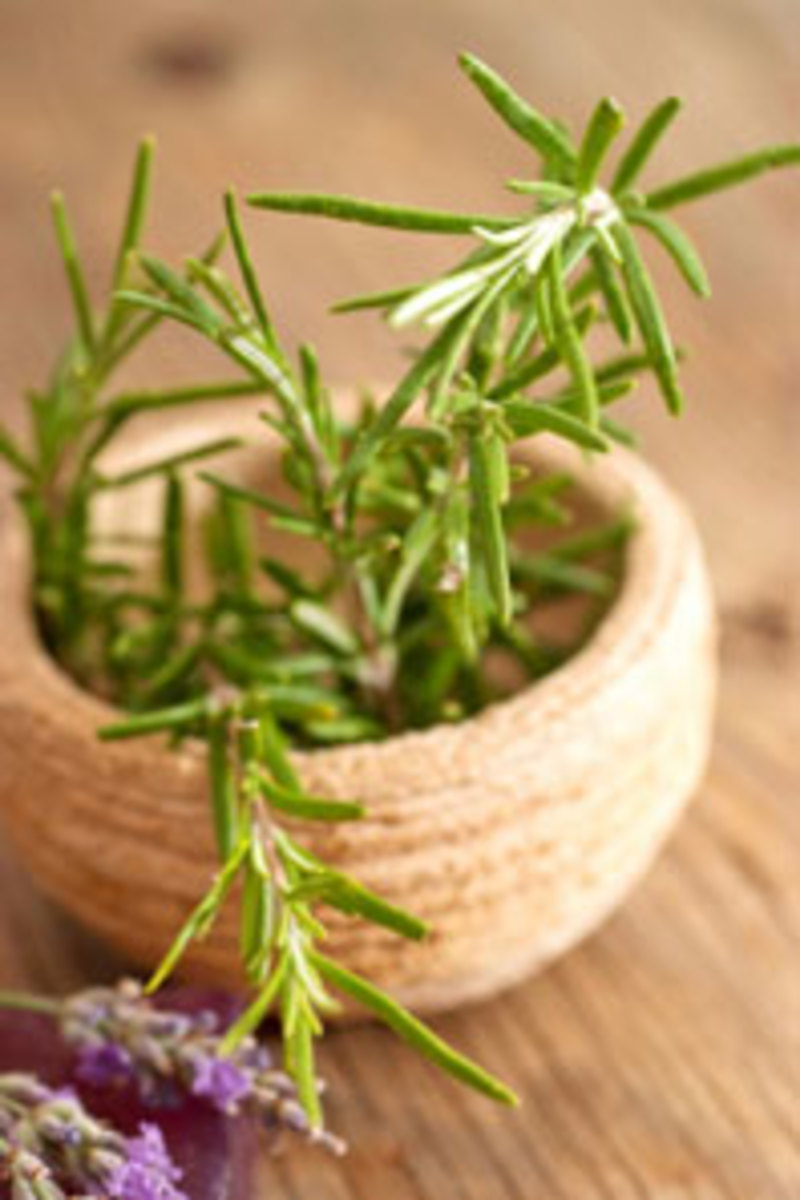- HubPages»
- Health»
- Alternative & Natural Medicine»
- Aromatherapy
Essential Oils: A Beginner's Guide
Discover recipes to relieve common ailments, enrich food, expel tobacco smells, and repel insects. Find out, too, how to choose essential oils, and what "therapeutic grade" oils are.
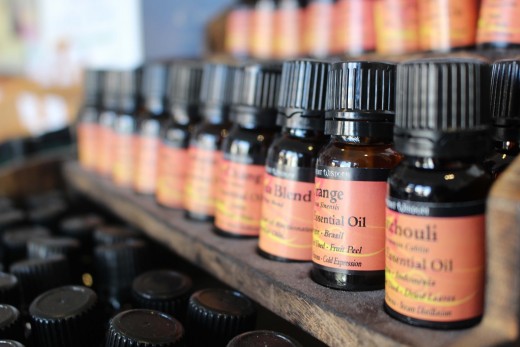
About Essential Oils
What Are Essential Oils?
Essential oils are derived from flowers, fruits, roots, leaves, and bark. Plants produce scent to attract pollinating insects and protect themselves from bacteria and mycosis.
How Essential Oils Are Used
Essential oils have been valued for their healing benefits since Arab traders brought them to the cloisters of Spain and southern France during the twelfth century. It wasn't long after this that the church discovered how aroma can manipulate mood and atmosphere, and thus implemented them into worship.
Today essential oils are used for similar purposes in the home, as well as being a vital component of processed foods and cosmetics to improve their appeal to consumers.
"Quality" Essential Oils
Only natural, organic oils extracted by steam distillation or pressing are considered "quality" and "high quality" essential oils, the latter being of therapeutic grade.
But the oils of some plants are bound to an enzyme that causes them to oxidize at the moment of extraction, rendering them useless. This means their aroma can only be synthetically reproduced. Examples of synthetic oils are apple, apple blossom, lilac, linden, honeysuckle, lotus, magnolia, lily of the valley, almond blossom, passion flower, peach, and violet. Although high-end perfumes contain synthetic oils, they are not "quality" oils and should never be used for aromatherapy.
Because any fragrance can be synthetically manufactured and sold cheaply as "essential oil," always buy at a pharmacy to ensure that you're getting a safe, therapeutic product.
Therapeutic Grade Essential Oils
The most effective oils in aromatherapy are produced from plants grown in regions where climate and soil composition allow them to flourish notably well. Examples include lavender from the Haute Provence of France; orange blossom from Morocco and the coast of Sicily; rose from Bulgaria, Morocco, and Turkey; sandalwood from Mysore; and cedar from the Lebanon and the Atlas Mountains.
Therefore, although there is, for instance, such a thing as essential oil of cedar from Virginia, it contains only 40 healing substances, whereas cedar oil from the Atlas Mountains contains 160. Because the therapeutic value of the latter is greater, it is classified "high quality" or "therapeutic grade". Cedar from Virginia is merely a "quality" oil.

Aromatherapy
Aromatherapy obviously works through the sense of smell, but also through the skin.
Aromatherapy Through the Sense of Smell
Aroma stimulates the release of neurochemicals that determine mood. The effect can be relaxing, exciting or seductive—e.g., lemon balm and lavender slow brain activity affecting relaxation and calm, whereas citrus oils have the opposite effect.
The best way to apply aromatherapy through the sense of smell is with a "diffuser," also called an "oil burner" (illustrated below).
An aromatherapy diffuser works by heating a mixture of water and essential oils to release aroma through vapor. Depending on the size of the diffuser's bowl, five to 15 drops of essential oil are usually sufficient. Never use a diffuser without water, especially as it can cause the bowl to crack depending on material.
Aromatherapy Through the Skin
The molecules of essential oils are small enough to penetrate the skin and reach underlying tissue, glands, muscles, and organs as well as the circulatory system. Applied through bathing or massage, healing benefits are noticeable within minutes.
Just mix a few drops of essential oil with a cup of milk and add to your bathwater.
For massage, mix essential oils with a carrier oil, honey, or a fatty food like heavy cream, sour cream or mashed avocado. The highest recommended concentration is three percent essential oil.
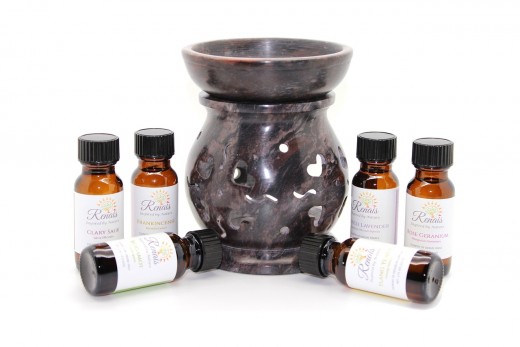
Handling Essential Oils
- Because most essential oils can cause irritations, never apply them to the skin without diluting with water or adding to a carrier oil or similar. Exceptions are lavender, mint, rose, and lemon balm, but be careful on sensitive skin.
- Store essential oils in dark bottles and keep away from direct sunlight. Never leave bottles open for longer than necessary.
- Mixing oils can shorten their life by up to three months, therefore, mix only small amounts when making massage oils etc.
- Essential oils last on average about 6 months to a year. They don't actually "go bad" or turn rancid, but they do oxidize over time, which impairs their therapeutic efficacy. An essential oil has expired if it alters its fragrance, turns cloudy, and/or thickens in consistency.
How to Choose Essential Oils
Just as you would when deciding on a perfume, test essential oils first on a strip of blotting paper.
Not liking an oil (you may dislike it to the point that it makes you nauseous) is an indication that it will be of no benefit, even if it is recommended for the ailment or condition you intend to treat.
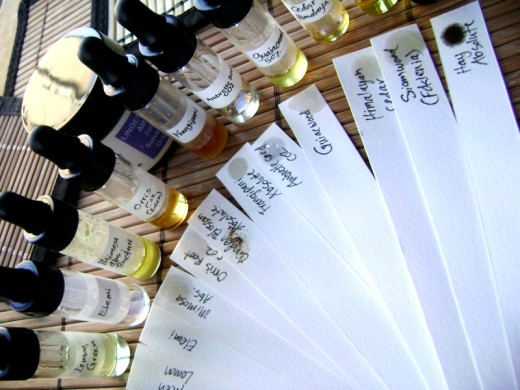
Recipes for Aromatherapy Diffusers
Vaporize essential oils in a diffuser to inspire meditation, relieve colds, aid sleep, induce relaxation, and enhance concentration. Diffusers can also be used around the house to expel tobacco odors and repel insects.
If you have an aversion to any of the oils in the following recipes, replace with one of the listed "alternative oils."
Further down the page you'll find culinary recipes for essential oils.
For Meditation
Oils
|
|---|
1 drop mytle
|
1 drop rose
|
2 drops frankencense
|
2 drops cedar
|
Alternative oils: Lavender, myrrh, sage, juniper, hyssop
|
To Create a Relaxed Atmosphere
Appropriate for the sitting room or bedroom. It can also be added to bath water or used for massage with a carrier oil or similar, as described above.
Oils
|
|---|
6 drops verbena
|
2 drops geranium
|
or
|
4 drops grapefruit
|
1 drop rose
|
3 drops cedar
|
Alternative oils: All floral and citrus aromas—e.g. you could replace grapefruit with lemon, or rose with lavender
|
To Enhance Concentration
Appropriate for the study or work area.
Oils
|
|---|
3 drops hyssop
|
4 drops lemon
|
Alternative oils: All citrus oils, mint, rosemary, Swiss (stone) pine
|
To Relieve Insomnia
Appropriate for the bedroom or added to bath water.
Oils
|
|---|
2 drops geranium
|
3 drops lavender
|
3 drops lemon balm
|
Alternative oils: Roman chamomile, mimosa, neroli, orange, rose, sandalwood, yarrow, ylang ylang
|
To Enhance Libido
Oils
|
|---|
1 drop jasmin
|
3 drops sandalwood
|
1 drop vetiver
|
Alternative oils: Tuberose, ylang ylang, musk seed
|

To Stimulate Appetite
Oils
|
|---|
4 drops grapefruit
|
3 drops sandalwood
|
3 drops vetiver
|
Alternative oils: All citrus oils, vanilla, cinnamon
|
To Relieve Digestive Disorders
Vaporize any one of the following: Roman chamomile, coriander, cumin (jeera), mint, cinnamon
To Relieve Cold Symptoms
Appropriate for the bedroom or added to bath water. Mixed with a carrier oil, it also makes an effective chest rub.
Oils
|
|---|
3 drops eucalyptus
|
2 drops Swiss (stone) pine
|
5 drops lemon
|
Alternative oils: Cajuput, camphor, mountain pine, lavender, hyssop
|
To Expel Tobacco Odor
Oils
|
|---|
2 drops myrtle
|
1 drop neroli
|
2 drops Swiss (stone) pine
|
Alternative oils: Bay-leaf, lemon grass, sage, juniper, hyssop, lemon
|
To Repel Insects
Vaporize any one of the following: Eucalyptus, geranium, lavender, clove, cedar
Culinary Uses for Essential Oils
Use essential oils to turn everyday foods and beverages into luxury commodities.
Here are a few examples of what can be done, but seek expert advice before experimenting beyond the recipes given here; many essential oils are not suitable for consumption. Use synthetic oils under no circumstances and always buy from a pharmacy!
Aromatic Vinegar
Because of its sweet note, this is great to dress bitter tasting lettuces like radicchio, rocket salad and endive.
Combine the following ingredients, pour into a glass bottle, and seal. Allow to mature in a cool, dark place for two weeks.
Ingredients
|
|---|
200mL (approx. 1 cup) white wine vinegar
|
2 tablespoons maple syrup
|
4 drops tarragon essential oil
|
3 drops lemon balm essential oil
|
2 drops hyssop essential oil
|
Aromatic Honey
This is delicious spread on buttered toast or as a sweetener for tea.
Ingredients
|
|---|
250g (approx. 8 oz) clear honey
|
2 drops mandarin essential oil
|
1 drop vanilla essential oil
|
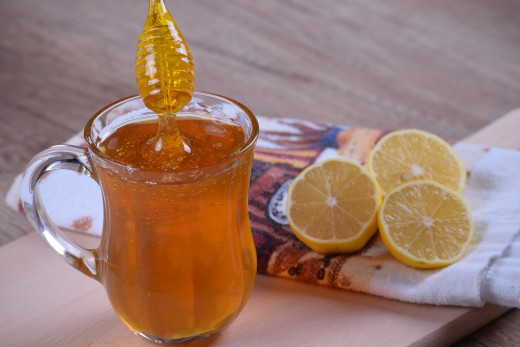
Salad Oils
Ingredients
|
|---|
100mL (approx. 1/2 cup) sesame oil
|
4 drops nutmeg essential oil
|
or
|
100mL olive oil
|
6 drops basil essential oil
|
10 drops oregano essential oil
|
or
|
100mL hazelnut oil
|
5 drops dill essential oil
|
3 drops marjory essential oil
|
Refreshing Summer Drink
Stir together the following ingredients and refrigerate until cold. Serve with ice and and slices of lemon.
Ingredients
|
|---|
1 liter (approx. 2 pints) green tea
|
1 - 2 tablespoons maple syrup
|
1/4 liter (approx. 1/2 pint) apple juice
|
2 drops cinnamon leaf essential oil
|
3 drops lemon essential oil
|
© 2014 Jayne Lancer

